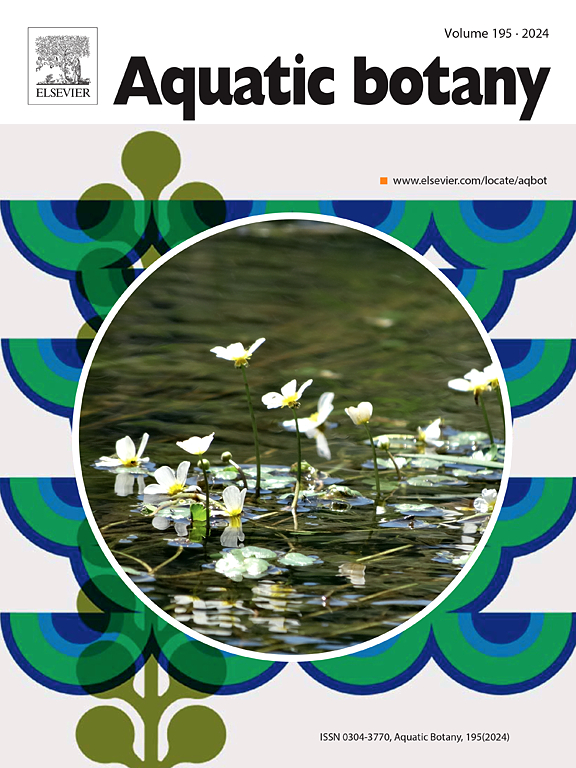First report of Halophila stipulacea (Forsskål) Ascherson,1867 in the Dominican Republic, an invasive species that continues to expand across the Caribbean
IF 2.6
4区 生物学
Q2 MARINE & FRESHWATER BIOLOGY
引用次数: 0
Abstract
Halophila stipulacea (Forsskål) Ascherson,1867 is a seagrass species native to the Red Sea and the Persian-Indian Ocean, introduced 150 years ago into the Mediterranean Sea. H. stipulacea was first reported in the Caribbean in 2002; and in less than 15 years, it expanded across small island nations and Venezuela. Expected to continue expanding across its invasive range, monitoring programs aimed at spotting new geographic areas where H. stipulacea has successfully settled are vital. Here, we report for the first time an extensive meadow of H. stipulacea in Punta Salinas, Bani, Peravia Province, Dominican Republic (La Hispaniola). In November 2024, the species was spotted drifting inside Las Calderas Bay, and soon after, detected in a meadow located at the exposed side of Punta Salinas. After taxonomic confirmation, we conducted a survey during December 2024 to check for the presence of H. stipulacea meadows We observed a large H. stipulacea patch (1500 m) established on muddy sediments mixed with Dictyota spp., dead Halimeda spp. and other macroalgae. On average, the alien species covered 67.5 ± 36.7 %, whereas Thalassia testudinum covered < 5 % of the substrate. While the impacts of H. stipulacea in La Hispaniola remain unknown, our results confirm that H. Stipulacea continues to expand, successfully invading coastal habitats across the Caribbean region.
1867年,在多米尼加共和国首次报道了一种持续在加勒比海地区扩张的入侵物种——托叶盐藻(Halophila tolacea, forssk)
Halophila tolacea (forssk) Ascherson,1867是一种原产于红海和波斯-印度洋的海草物种,150年前被引入地中海。2002年,在加勒比地区首次报道了托马甲;在不到15年的时间里,它扩展到了小岛屿国家和委内瑞拉。预计将继续扩大其入侵范围,旨在发现新地理区域的监测项目是至关重要的。本文首次报道了在多米尼加共和国(La Hispaniola) Peravia省Bani的Punta Salinas大面积的托马草甸。2024年11月,人们发现该物种在拉斯卡尔德拉斯湾内漂流,不久之后,在蓬塔萨利纳斯裸露一侧的草地上发现了该物种。在分类确认后,我们于2024年12月进行了调查,以确定是否存在托马草甸。我们在泥质沉积物上发现了一个大的托马斑块(1500 m),与Dictyota spp、haalimeda spp和其他大型藻类混合在一起。外来种对底物的平均覆盖率为67.5 ± 36.7 %,而海棠对底物的平均覆盖率为<; 5 %。尽管托马甲对伊斯帕尼奥拉岛的影响尚不清楚,但我们的研究结果证实,托马甲继续扩张,成功地入侵了加勒比海地区的沿海栖息地。
本文章由计算机程序翻译,如有差异,请以英文原文为准。
求助全文
约1分钟内获得全文
求助全文
来源期刊

Aquatic Botany
生物-海洋与淡水生物学
CiteScore
3.80
自引率
5.60%
发文量
70
审稿时长
6 months
期刊介绍:
Aquatic Botany offers a platform for papers relevant to a broad international readership on fundamental and applied aspects of marine and freshwater macroscopic plants in a context of ecology or environmental biology. This includes molecular, biochemical and physiological aspects of macroscopic aquatic plants as well as the classification, structure, function, dynamics and ecological interactions in plant-dominated aquatic communities and ecosystems. It is an outlet for papers dealing with research on the consequences of disturbance and stressors (e.g. environmental fluctuations and climate change, pollution, grazing and pathogens), use and management of aquatic plants (plant production and decomposition, commercial harvest, plant control) and the conservation of aquatic plant communities (breeding, transplantation and restoration). Specialized publications on certain rare taxa or papers on aquatic macroscopic plants from under-represented regions in the world can also find their place, subject to editor evaluation. Studies on fungi or microalgae will remain outside the scope of Aquatic Botany.
 求助内容:
求助内容: 应助结果提醒方式:
应助结果提醒方式:


